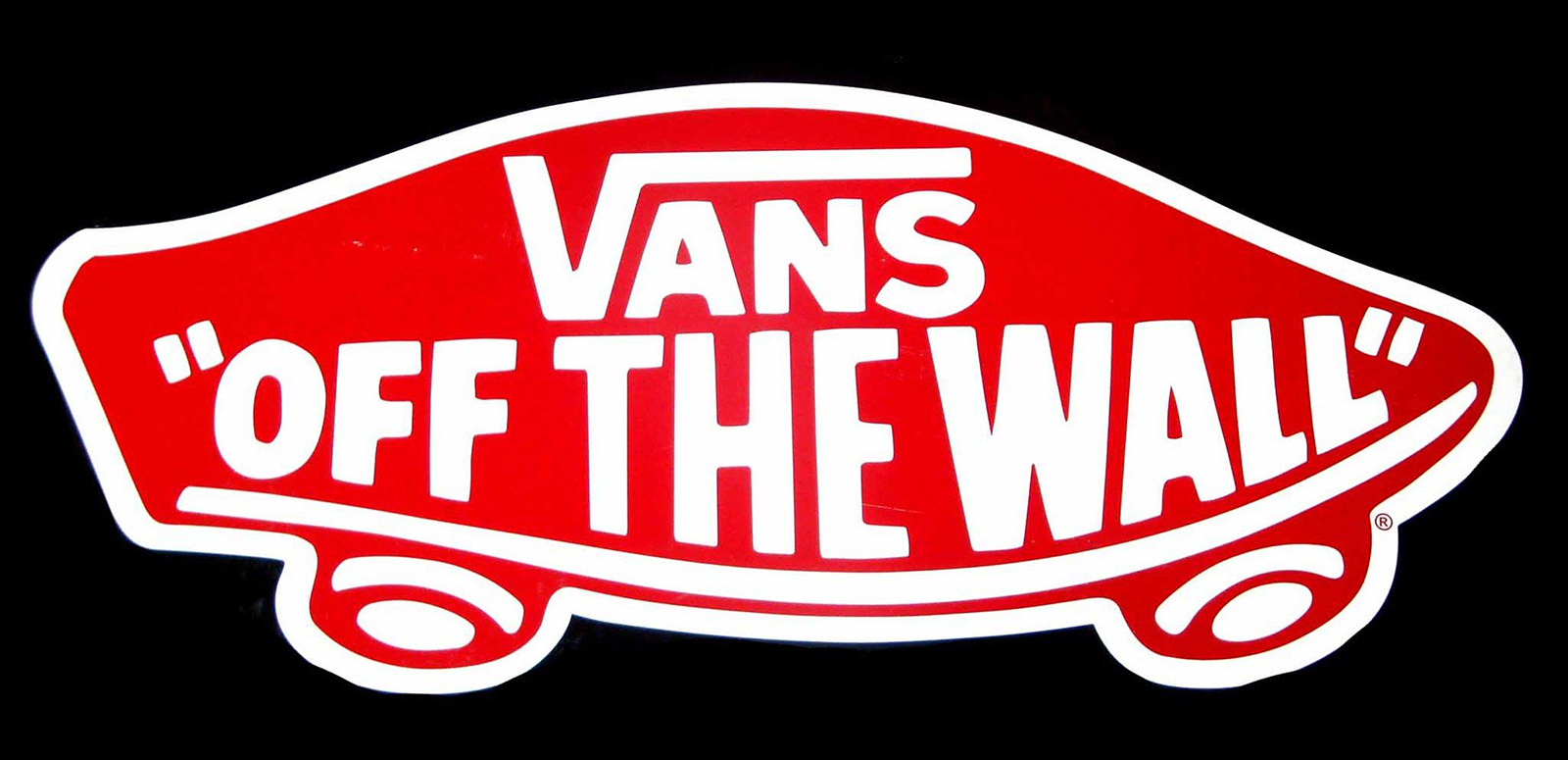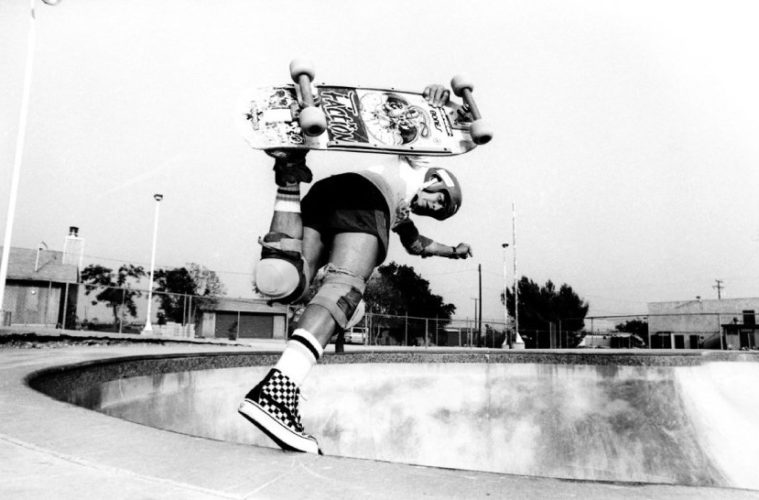Worldwide shoe company, Vans, is an Orange County original and stays true to its roots in family, hard work, quality manufacturing and creativity. Originally named the Van Doren Rubber Company, Vans has always specialized in making simple, straight-forward, high-quality shoes for everyday wear, extreme sports and stylistic statements.
Founded in 1966, the Van Doren Rubber Company, aka Vans, began as a unique business venture that stood out from the rest because it manufactured shoes on the same premises that it sold its product to the public. As an executive at one of America’s largest shoe manufacturers, Paul Van Doren noticed that shoe manufacturers were making pennies per shoe sold, while retailers took home the bulk. So, brothers Paul Van Doren and Jim Van Doren, along with friends and partners Serge D’Elia and Gordon Lee, decided to set up a company that made and sold each shoe, taking out the middle man.

Photo Courtesy of Vans, Inc.
One other major component to the Van Doren Rubber Company’s success was their timing and their relationship to the growing popularity of skateboarding. In the early 1960s, skateboarding was taking off in popular youth cultures. Surfboard companies like Makaha and Hobie started making high-quality skateboards while Surfer Magazine began publishing a quarterly magazine called Skateboarder. Musicians began referencing “sidewalk surfing” in songs, the very first skate contests began popping up all along the California coast, and ABC Wide World of Sports began broadcasting the Skateboarding Championships. This was a monumental time for skateboarding, and for the Van Doren Rubber Company, as these shoes were perfectly designed for skaters and made of nearly unbreakable materials – perfect for the thrashing that skaters did to their shoes.
In 1966, the Van Doren Brothers, Serge D’Elia and Gordy Lee built their first Van Doren Rubber Company factory and an accompanying retail store – that was only 400 square feet – in Anaheim, California. The first day they opened, 12 customers purchased shoes, which were made that day and ready for pick-up in the afternoon. At the beginning, they only offered three styles of shoes in just a few different colors ranging in price from $2.49 – $4.99. If a customer wanted something other than what they had, the customer would be asked to return later that afternoon to pick up their order, as Paul would scramble to make it for them that day. They were also open to challenges. A female customer came in and requested a shoe in a color they didn’t have. So, Paul asked her to bring in the color of fabric she wanted and they would make her shoes from it. That was the start of Vans’ customization, and it has been one of the most popular facets of the company offerings since.
Early Vans were said to be made “as strong a Sherman Tank.” The soles were twice as thick as other shoes and the canvas was made from Duck Canvas #10, the strongest canvas you could buy. The goal was to make a shoe so strong that people would show it off to their friends and it would last a long time.
Over the next couple of years, Vans was opening a new store almost every week. Although the name of the company was still the Van Doren Rubber Company, the customers began to refer to their shoes as “Vans” for short. The name “House of Vans” was coined in the early ‘70s.

Photo Courtesy of Vans, Inc.
The soles of the first Vans shoes would easily crack along the balls of the outer sole, so Van Doren patented a new waffle pattern sole for better movement, flexibility and durability for skaters. With the skateboarding craze of the early ‘70s, Vans began expanding its offerings and released the Era line. The Vans #95, now known as the Era, with a padded collar and different color combinations, was designed by legendary Venice skateboarders Tony Alva and Stacy Peralta in 1976 and became the shoe of choice for an entire generation of skateboarders.
The original Vans logo tag, which appeared on the very first pairs of shoes manufactured, sported the name of the company inside a rectangle. The next logo was designed in the ‘70s. Surprisingly enough, the logo was created by a 13-year-old boy. The earliest collaboration and passion for youthful opinion and preference was with 13-year-old Mark Van Doren, son of co-founder James Van Doren. The logo existed in the form of a stencil, which was to be painted on Mark’s skateboards. Afterwards, it appeared on the heel tab of the Vans #95 shoe (Era).
The famous “Off the Wall” logo made its debut in 1976. Its most notable visual detail was the stylized Van shape of the emblem. Also, it was the first time when the “Off the Wall” motto was included in the logo. This motto came from skaters’ slang; they used it to describe the fancy tricks they performed in empty pools.
Soon after the new motto and logo were released, Vans improved their shoe offerings even more by debuting the Vans Sidestripe with Vans #36, the Old Skool. The Old Skool was Vans’ first skate shoe that incorporated leather panels for increased durability. What started as a random doodle by Paul Van Doren was originally referred to as the “jazz stripe” and has become the unmistakable hallmark of the Vans brand.
In 1977, Vans introduced the slip-on line of their shoes and they were quickly the most popular shoe to have in Southern California, thanks to skateboarders and BMX riders. The Sk8-Hi model was introduced in 1978 as “Style 38,” and showcased the Vans Sidestripe on yet another innovative silhouette. As the second model featuring the “jazz stripe,” the Sk8-Hi took skate functionality in the shoes to the next level – above the ankle, where skateboarders often abused their lower extremities the most.
Vans reached its nationwide popularity when Sean Penn wore a pair of checkerboard slip-ons in “Fast Times at Ridgemont High” (1982). However, this success would be short-lived as hard times were soon to come, and fast. Van Doren was forced to reduce the price of his shoes due to rival companies selling cheap substitutes of the popular slip-ons. By 1984, Vans was pretty deep in debt and the owners were forced to file for Chapter 11 bankruptcy. It took three years for the company to pay off Vans’ debts and get back to square one. When Vans came back up, the lack of supply of the Vans shoes made them a rarified commodity and highly sought after. The new demand for Vans shoes was so high, they brought in over $50 million in sales. Van Doren was then able to expand Vans’ reach to international markets.
In 1991, the newly named Vans, Inc. decided to make initial public offering of stock at $14 per share on the NASDAQ Stock Exchange and Paul Van Doren stepped down from the board. Throughout most of the ‘90s, Vans released a number of other models, and began to incorporate snowboard boots, as well as collaborate with Supreme, and sponsor a wide array of events including the Vans Warped Tour, Vans Triple Crown Series and others. In 1998, Vans opened the first indoor/outdoor skatepark at the Block at Orange Mall, the first skatepark of its kind.
 Since the 1990s, Vans has continued to partner with premier athletes in Skateboarding, Snowboarding, BMX and other extreme sports, and has continued to sponsor and host many industry-leading events.
Since the 1990s, Vans has continued to partner with premier athletes in Skateboarding, Snowboarding, BMX and other extreme sports, and has continued to sponsor and host many industry-leading events.
In 2004, Vans got back to its roots by leaning into the alternative youth customer base and launching the Vans Customs program where customers are able to create their own unique Classic Slip-Ons utilizing hundreds of different color and pattern combinations. This same year, the VF Corporation bought Vans for nearly $400 million including stock options. In 2016, Vans celebrated its 50th year of business, and still remains an Orange County family business. Steve Van Doren, Paul Van Doren’s son, has worked for Vans since 1966 when he was only 10 years old. Steve Van Doren is now the Vice President of Events and Promotions.
Advertising disclosure: We may receive compensation for some of the links in our stories. Thank you for supporting Irvine Weekly and our advertisers.

